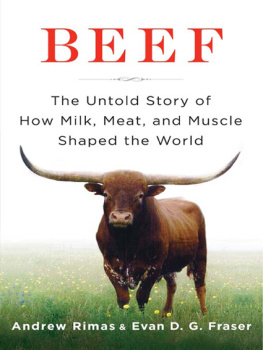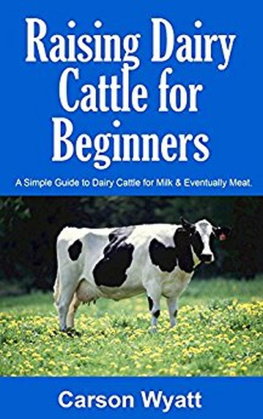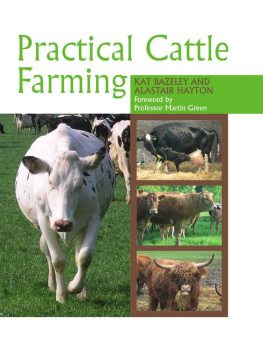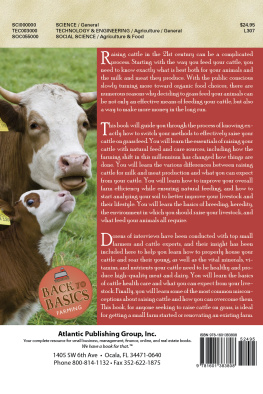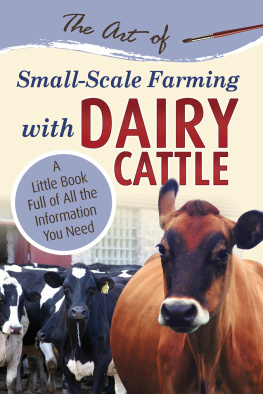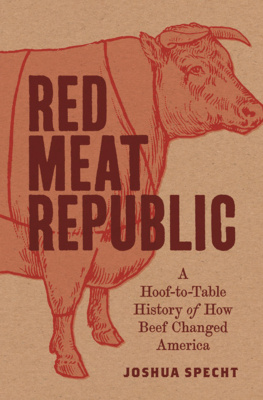. .
If you shimmy a jeep down the Uplands Road that falls, like a stream of shattered asphalt, from Nairobi into the Great Rift Valley, youll come to a broad green world thats full of cows.
You see them as you drop past the cascading trees and onto the tilled flats, passing cornfields, satellite dishes, and squat hamlets that blister up from the dust. Cows are everywhere. You see them alone on the roadside, strolling in sixes and dozens; grazing by the hundreds. Leaning on signs for the DELIVERANCE CHURCH and PARADISE HOTEL , staring mournfully at mosques and butcher shops. You see them in the foreground of brambling woods, while giraffes scud and tack above billows of wild sage. They speck distant pastures and brush against the side-door mirrors of your car. Everywhere, you see fixed brown eyes, muddy hooves, and shoulders rolling at a thoughtful plod. Everywhere, you see cattle.
It was here, about three million years ago, that human beings took one of their most resolute evolutionary steps. The Rift Valley is where a lithe, soft-furred hominid called Australopithecus afarensis loped and waddled for a short time until she turned into a significant fossil. This was humanitys common foremother, familiar today on account of a skull named Lucy. She would have known shade under the sage bushes, and hot dust and predators in the open grass. And, 2.5 million years ago, just like now, she would have known cows. Crouching in the acacias thorny crooks, our ancestors looked on as horned giants scraped and lowed and thundered. Sometimes, these early hominids would find a carcass and scoop at the fat and purple muscle, licking at the blood. We evolved together, cows and us. We are old, old companions.
Driving through the valley today, youll also see the people who own the cattle, the Masai. In the century and a half since the English arrived, this tiny, storied tribe has tried to ignore everything from nuclear fusion to Karen von Blixen: they still wear red shuka cloaks instead of trousers; they still distend their earlobes to a spaniel droop. To the Masai, the Iron Age has never lost its allure. And they still live for cattleherding them, milking them, counting them, fighting over them, and comparing them for size. Mostly, though, they just watch them. There isnt a cowboy or gaucho in the world who understands cattle better than does a four-year-old Masai.
Our first glimpse of the valley was through the fly-speckled wind-shield of a jeep that careened like a sprinting drunk between ruts deep enough to crack an axle. We were late in getting to the village of Endikirt Osenyai, and our driver, a Masai named Jerry Ole Kina, wanted to reach it before sundown. Jerry is a big man among the Masai, quite literally since he tops six feet, all chest and shoulder and jawbone. As a veterinarian, he is something of a celebrity in a tribe that believes God gave them possession of all the cattle in the world. Its a peculiarity of the Masai that, out of all of Africas treasures in gold and diamonds and fertile earth, they chose cows to carry the stamp of divine grace.
They say that God gave the Masai cattle, said Jerry in that particular African timbre that sounds roasted like coffee. They say it makes us different from the Kikuyu, with their seeds and hoes, or the Dorobo, with their bows and honeybees. And it makes us different from the white man, with his books.
Thats what they say.
Theyre wrong, of course. For ten thousand years, people in Africa, Europe, and Asia have claimed dominion over cattle, very often over the herds that belong to their neighbors. Coveting cows is an ancient vice, and their theft, if not the most timeworn style of wickedness, is as old as Cain. Cows have always roused our acquisitive instincts. The first reason for this is also the one thats the most animal.
. .
The most profligate dish on the menu at the Grill 23 restaurant in Bostonand this is a menu carbuncled with oystersis the Berkeley. Weighing, like a slice off a prizefighter, at an exact sixteen ounces and hung to dry for two to four weeks to let its juices brew, its the sort of rib eye steak that people order at birthdays or coronations. As moist as a melon, its filaments cleave at the glimmer of a knife. Seared but not blackened, the middle is salmon pink darkening to a clean streak of lobster red, with a taste thats not too marrowy, but thats touched with nuts and greens; the fat runs clear. The cow from which its harvested is the Dutch Frisian, a dairy animal fed on flaked corn, alfalfa, and Sudan grass, and its silky flavor is unusual to a palate accustomed to rough Black Angus. This meat needs no sauce, no pepper, and no clever dressing. An accompanying clod of spinach creamed with cheese and bacon is as unnecessary as the fat potato on the edge of the plate. As far as a dinner entre can be both vainglorious and refined, this is.
Herodotus thought that history began with rape, with the tit-for-tat abductions of Io, Europa, Medea, and then the final, unforgivable business of Helen. He was wrong. History isnt the story of sex. Its the story of food. The Berkeley is why people have always collected cows. Human beings love beef. They love its perfumed smoke, they love its roiling drops of blood and grease, they love its density, so much more gravid in the belly than any vegetable, like ballast for living. Most of all, human beings love its panoply of flavors. A single cut of sirloin can taste liverish and sweet. Veal is milky. Chuck is dark, lush, even earthy like an opulent wine.
To be meaty means to possess merit and conviction. To be vegetal means to be practically dead.
There are vegetarians at large in America today who, when asked if they ever felt a carnivorous tug, mumble something about childhood. I ate a lot of beef when I was a kid is a typical response. Hamburgers and hot dogs and bologna, that sort of thing. But then it stopped tasting good.
These vegetarians are right. Beef today tastes drab compared with the T-bones of yore. A generation ago, beef had a more vigorous snap in its juices. Its loin cuts tasted more sugary, its flatiron steak more gamey. Everything from lowly burger meat to the juicy tip of the top sirloin (once called the honeymoon roast) was nearer the Platonic ideal. This isnt nostalgia for a lost world of Main Street butchers and window-dressed chops roosting, like scarlet birds, in parsley. The unhappy truth is that beef today is different because cattle today are different. They eat different food. Their bloodstreams pulse with different medicines. Its obvious why so many dejected beef eaters, fearing cholesterol, trans fats, water pollution, veal crates, hormone injections, E. coli, and mad cow scares, threw up their hands (and luncheon meats) and switched to trout.
For years, I didnt eat meat, says Jay Murray, the executive chef at Grill 23 and the man who cooks the Berkeley rib eye. I didnt think that beef had much flavor.
Not all of it does. Cattle arent created equal, and their differences widen with age. As a rule, younger, fattier meat is perceived to have the best taste. Meat science uses numerical data like skeletal maturity, preliminary yield grades, and marbling subunits to calculate the expected tenderness of a carcass, and hence its worth. Theres art involved, as well as science. The U.S. Department of Agriculture awards grades to beef, much like figure-skating judges rank a lutz. Inspectors eye the marbling (flecks of fat within the lean part of the meat) and stamp the beef with a grade: Prime, Choice, Select, Standard, Commercial, Utility, Cutter, or Canner. Prime makes up a mere 3 percent of graded beef and is usually sold exclusively to steakhousesfodder for the rich. Choice is what you buy in supermarkets, as is Select, which is a shade tougher. Standard and Commercial are stringy enough to be ungraded and only appear masked under brand-name plastic. The rest is the stuff of frankfurters.

